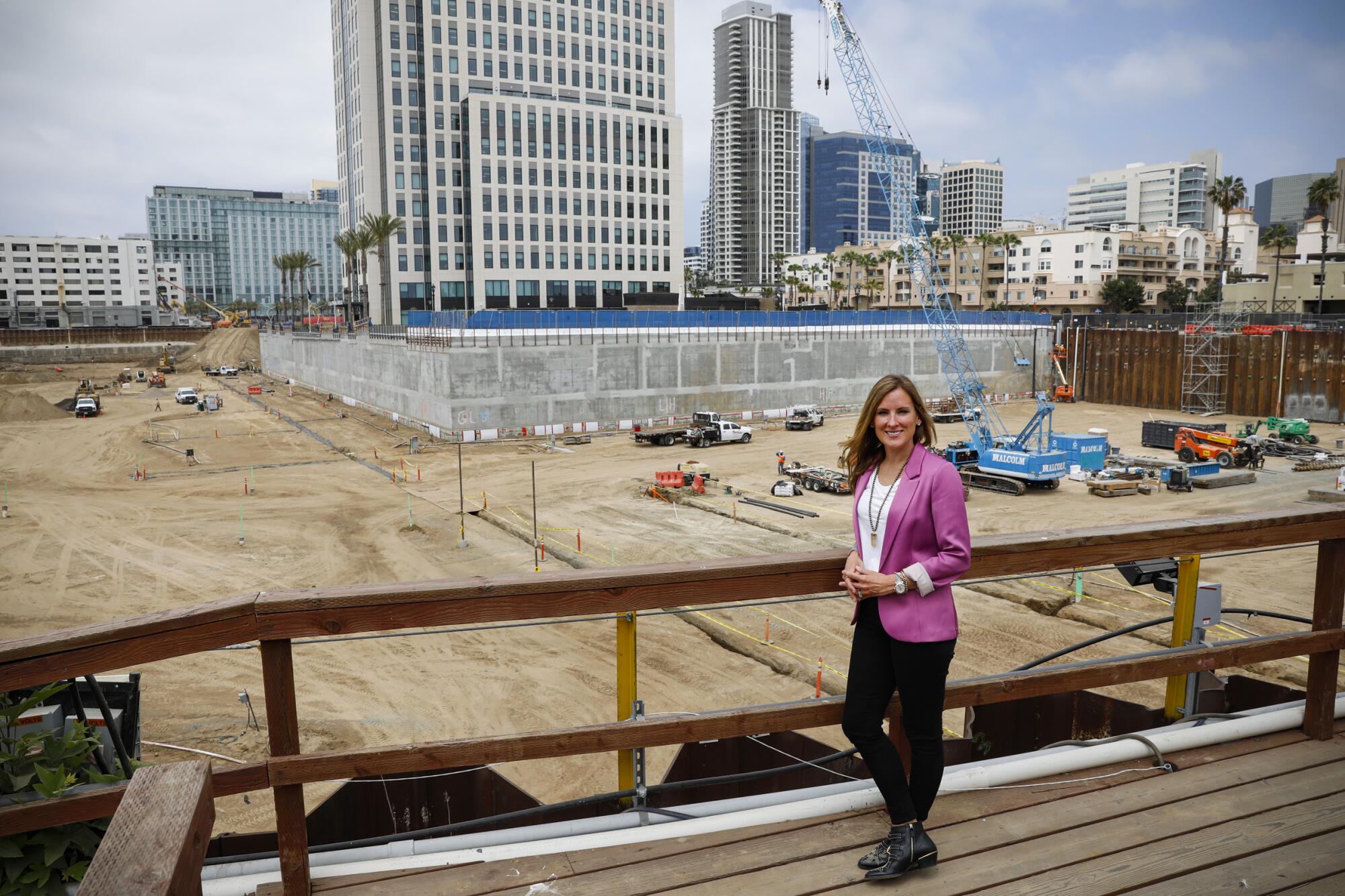
There is a hole in the earth the likes of which downtown has not seen in nearly four decades. IQHQ President Tracy Murphy, with a team of commercial real estate heavy hitters, is working to turn it into a life science city.
Starting opposite Ruocco Park and following San Diego’s waterfront all the way to Broadway Pier, there is a hole in the earth the likes of which downtown has not seen in nearly four decades. You can’t actually see it — unless you have access to a nearby tower with a bird’s eye view onto the active construction site — but you can feel its force field with experts already predicting a seismic shift in San Diego’s office dynamics.
The cavernous pit is what’s known as the Research and Development District; it’s a $1.6 billion life science city from a biotech builder that didn’t exist two years ago.
If it turns out infinitely more attractive than the office park drab of yore, you can thank IQHQ President Tracy Murphy, who with a team of longtime friends and commercial real estate heavy hitters, is flipping a property that was arguably a flop. She’s taking land arduously entitled by the prolific San Diego developer (and former Union-Tribune owner) Doug Manchester and moving dirt, fast.
And she’s not just doing it in San Diego.
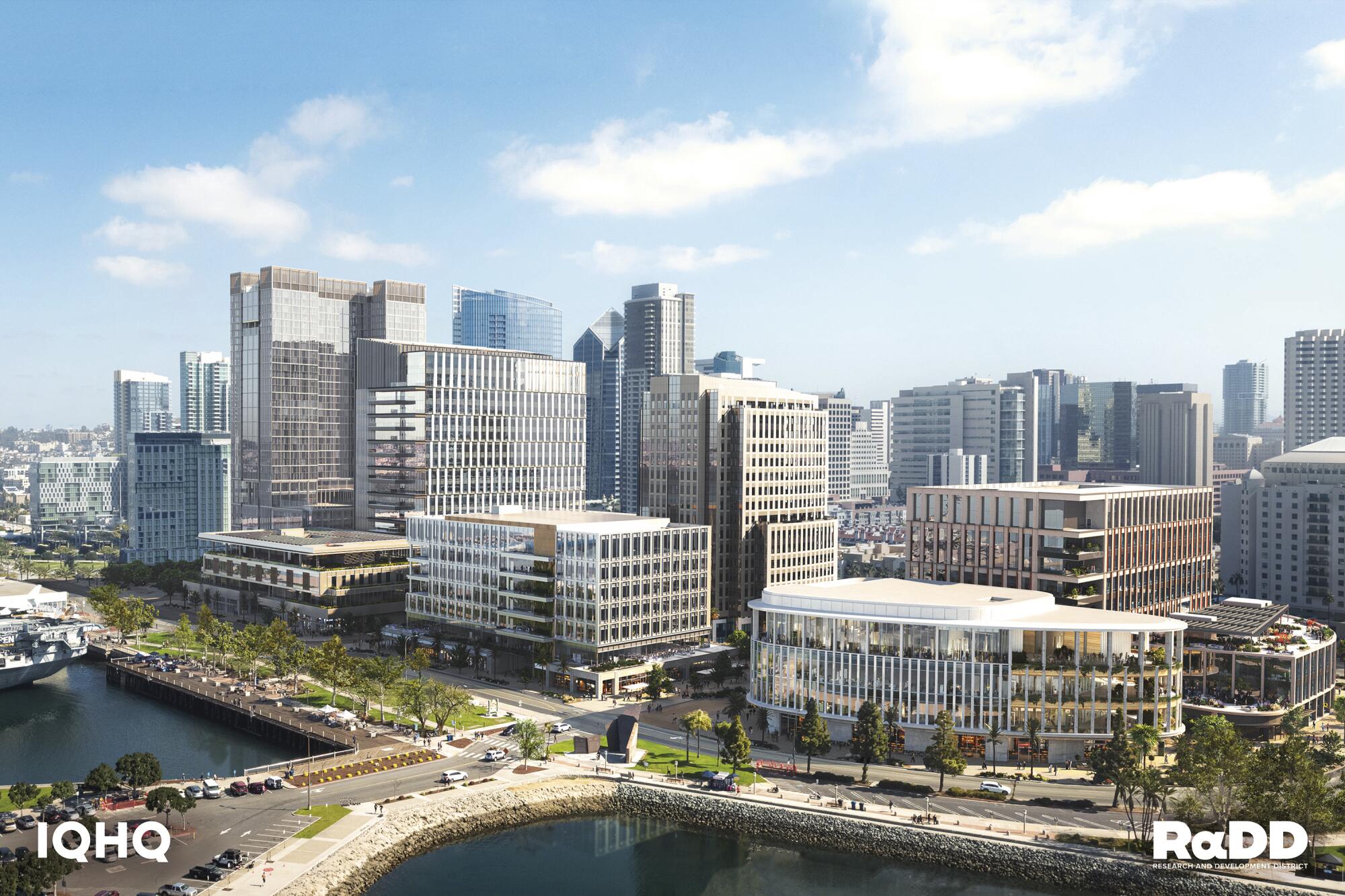
Started with an empty pitch deck and a fairly unimaginative name (Creative Science Properties) in the late summer and early fall of 2019, the group that quickly morphed into IQHQ has already raised $2.6 billion to build and run more than 5.5 million square feet of life science space, marking some of the most brazen bets on science-sector corporate behavior in Boston, San Francisco and, of course, here, in the firm’s hometown.
“We talk a lot about the behavior of sheep around here. People tend to do what everyone else is doing. To our credit — although it’s also riskier — we’ve done something a little different,” said Murphy, a 41-year-old mom of two boys who lives in Encinitas with her husband Todd.
Formed by five principals, including Murphy and Alan Gold, the man often credited with the invention of the life science asset class, IQHQ is more than any one person. But Murphy’s force is singular — and not because she’s typically the first person to arrive at the company’s Solana Beach headquarters, showing up shortly after school drop-off at 7:30 AM.
“I’ve only met her in a few meetings, and we’ve been on a couple panels, but I was dazzled by her,” said Mary Walshok, who is UC San Diego’s associate vice chancellor for public programs and the dean of UC San Diego Extension.
“What you have in Tracy is someone — I mean, she’s one of the founders of IQHQ. She was a high-powered player with Kilroy. And with BioMed Realty. She is a woman with intelligence, competitiveness, risk-taking capacity and she went for it. I just really admire her, but I also reflect on the fact that had Tracy been born the same year I was born, she might have been a university professor or a public interest lawyer or run a not-for-profit. So I developed this admiration, as well as joy, watching her because she speaks, not arrogantly, but with the confidence of experience and of knowledge.”

Some might call her intense. Women in her line of work can either choose to be shrinking violets or iron maidens, she says. She’s the latter — albeit with appropriate softness when needed.
“If you’re always the iron maiden, it’s very easy for everyone in your circumstances, particularly men, to criticize you,” she said. “You’ve got to find a way to draw a line and be firm, but be likable.”
And, by her own admission, you have to work harder than everyone else, too.
Nearly 37 percent of all professionals in commercial real estate are women, according to a 2020 study conducted by the women’s business association CREW Network in partnership with the MIT Center for Real Estate. However, the percentage of women shrinks the closer you get to the top — just 9 percent of women participants in CREW’s study held C-suite positions.
That’s because of an “old boys’ club” culture still lingering in San Diego real estate circles, Walshok said. The club is exclusionary by design.
“Risky business is when you take millions, hundreds of millions, of other people’s money and you invest it in an uncertain outcome: Venture capital, a new drug, owning a sports team, real estate development,” Walshok said.
“When you’re involved in exchanges of hundreds of millions of dollars, trust is hugely important. It’s relational. If you went to the same schools, and you played in the same sports, and you belong to the same country club, you have a lot of stuff in common. But if you’re a 65-year-old guy working with a 35-year-old woman, what’s the basis of trust?”
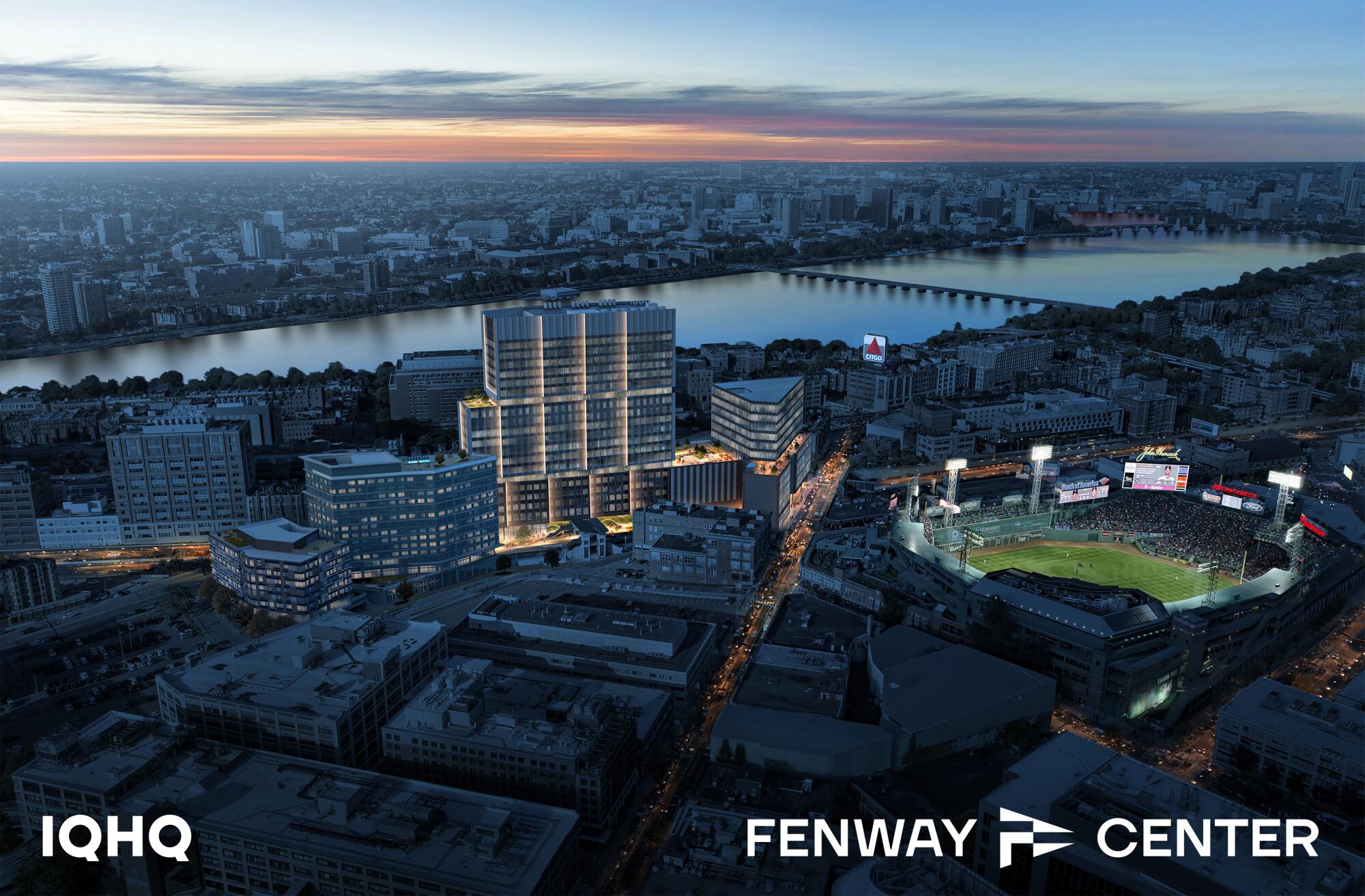
Born in Virginia and raised in Wisconsin, Murphy received a Bachelor of Arts from the University Wisconsin-Whitewater in 2002. Within 30 days of graduating and with just $4,000 to her name, she drove to San Diego, going as far west as her U-haul would take her.
In late 2002, Murphy went to work for John Frager as an assistant to the marketing director at Grubb and Ellis, BRE Commercial. By 2004, she was working on the brokerage side of the business, supporting senior brokers with their projects and listings, said Frager, who is now the regional leader for CBRE in San Diego and Hawaii. In that role, she made a small salary and received a tiny cut of commissions. Soon after, she steered herself into the life science nook because she was bored with run-of-the-mill office stock.
“For me as a person, I couldn’t go into any more carpet, white paper, reception desk spaces and feel like I had a long game,” Murphy said. “When I first ran into life science, it was my first year in real estate, and I was so inspired by what was happening in these buildings. ... I quickly branded myself as a niche person within a man’s world in a niche product.
“Life science was a thing here. It just wasn’t a very big thing. Every single person who I still adore to this day, from an adviser perspective, told me this is the worst idea you’ve ever had, don’t specialize. ... It was a huge risk at the time, but my gut just told me it was what I needed to do.”
In her earliest years, Murphy says she developed “eat-what-you-kill” instincts, drumming up business out of necessity — aka: paying bills. She characterized the time as an investment in herself, even joining Frager’s leadership development program, which included twice-weekly 5:30 a.m. taekwondo classes.
The junior staffer often crushed her senior male counterparts, becoming “King of the Ring.” Murphy mastered the martial art well enough to earn a red belt with a black stripe, stopping just shy of a black belt.
“Can you imagine doing these crazy dances and grunting in front of men 10 years older than you?” she said. “You dig deep for those kinds of things. I think it was a meaningful part of my development. Everyone tells me I’m a great public speaker. Stupid stuff like that played a role.”
Fast-forwarding a few years, Murphy found herself performing a dance of a different kind in front of Gold, who was then running BioMed Realty Trust, the firm he would later sell to Blackstone Group in a transaction valued at $8 billion. She was there with her partner, John Bonanno (also now a principal in IQHQ), and her boss, Frager. The goal was to get Gold to list his entire portfolio with the brokerage.
That’s not what happened.
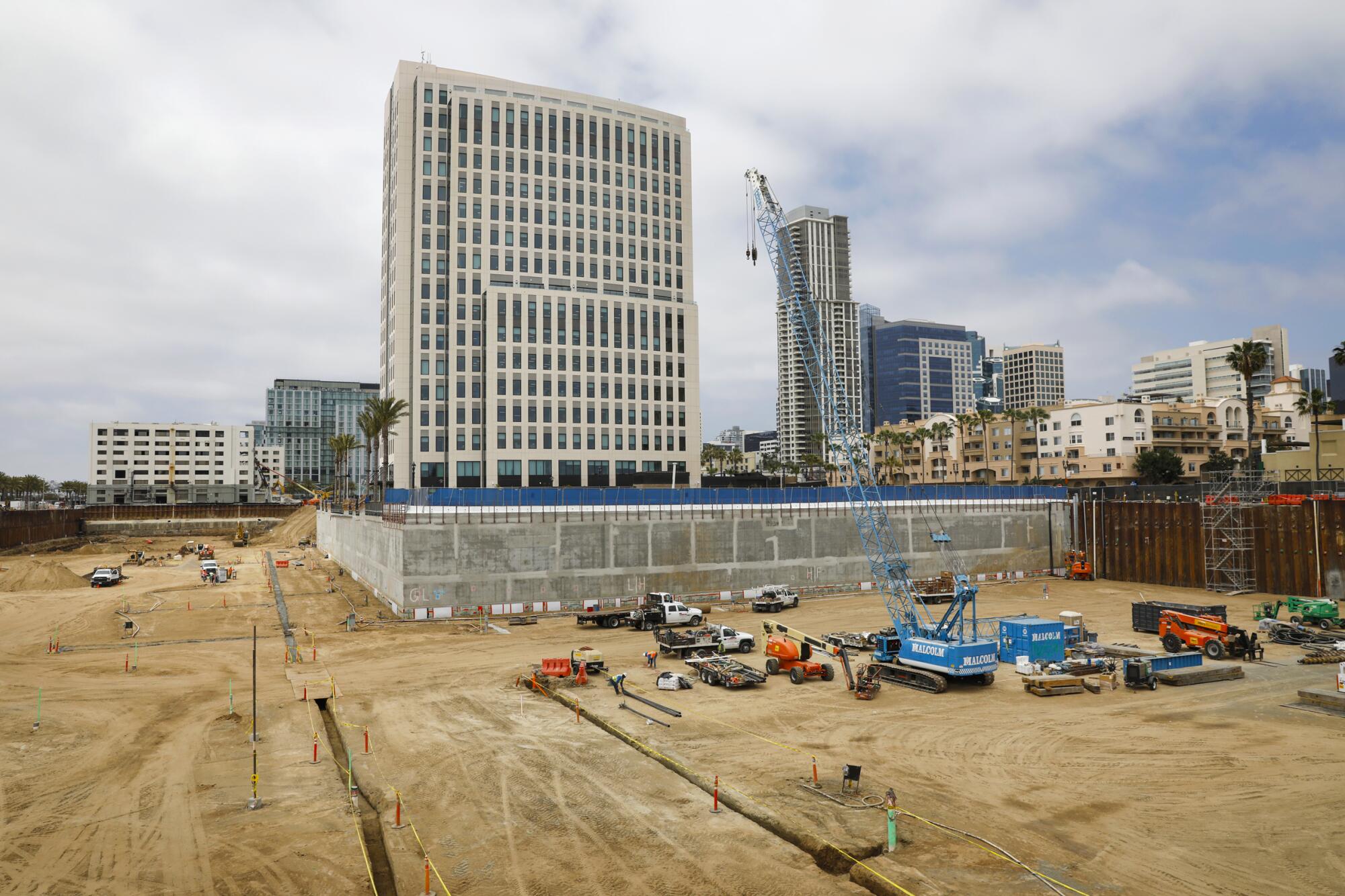
“We put ourselves through the wringer to get the perfect presentation. (Bonanno) and I got calls on a Saturday on the results of that,” she said. “What I thought was going to be an award of the assignment, because I thought we did a really good job, ended up being a job offer.”
Murphy and Bonanno both left to work for Gold. And Frager, whose tall stature made him the man assigned to hold the foam display boards during the presentation, lost his entire life science team because of the one-hour pitch.
“What stood out, besides how steadily I held the boards, was their knowledge of the industry, their knowledge of the San Diego life science market ... and understanding the trends and where things were going,” Frager said. “They just really had it down.”
While at BioMed, Murphy managed a large team, putting a development program together that included i3, the striking, angular three-building campus along La Jolla Village Drive that is occupied by Illumina. She recalls being told during tours that the project, because of some of the design and material choices (concrete, for instance), was stupid.
“It wasn’t just another box in the middle of San Diego. It’s a really, dynamic 100-year project that people quite frankly still talk about as the project in UTC,” she said. “It’s a testament to the kind of the product we were capable of pushing ourselves to build and bring even under scrutiny and opposition that it was too bold.
“And then the market liked it.”
Now Murphy runs IQHQ’s day-to-day operations, overseeing everything from insurance to leasing — even marketing. And the firm’s overarching investment strategy is, of course, always top of mind. Enter the Research and Development District, a far more radical proposition than anything before it.
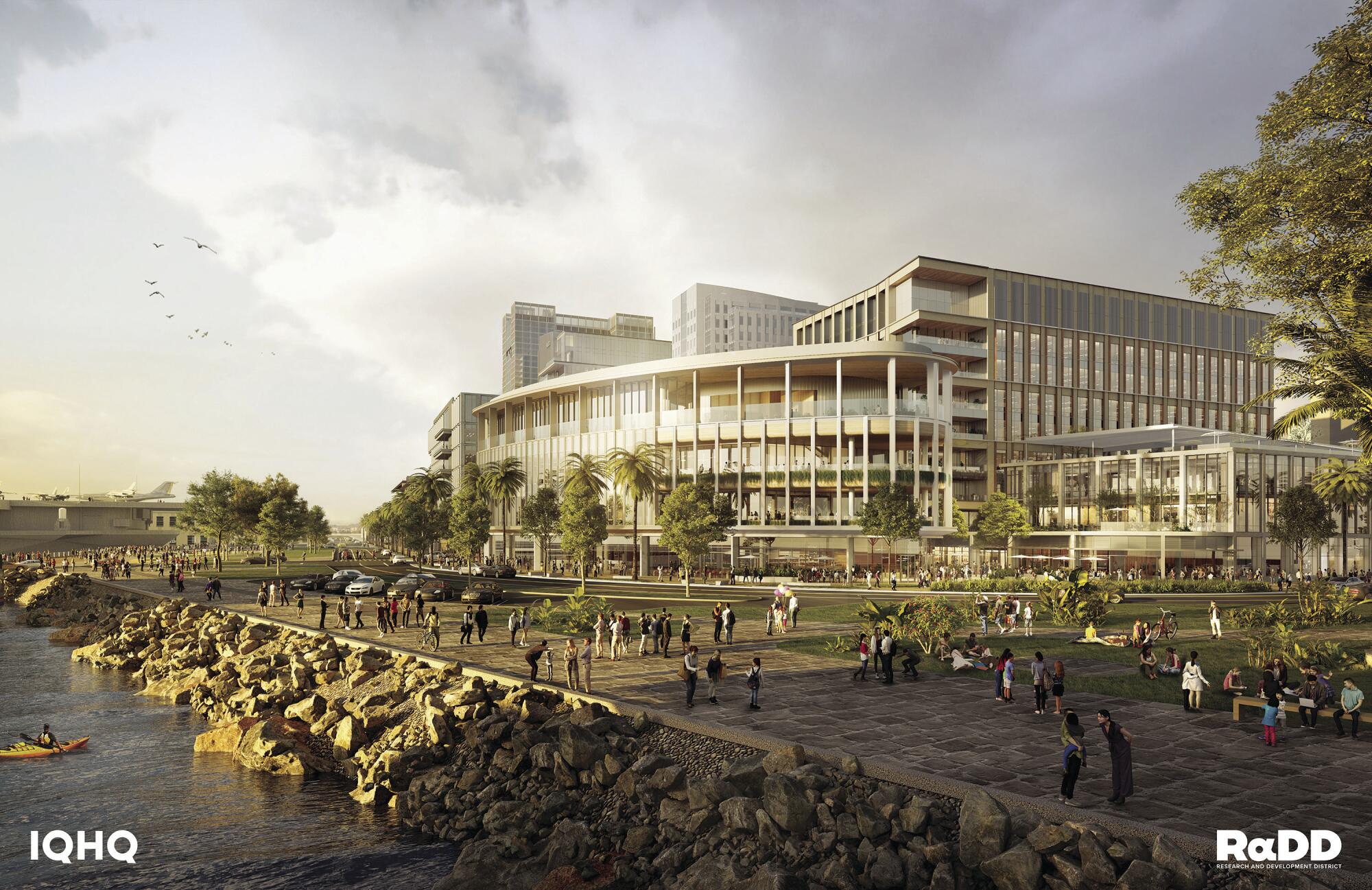
In late September, IQHQ paid $230 million to buy an 8.7-acre portion of Manchester Financial Group’s 99-year leasehold of the former Navy Broadway Complex, south of Broadway between Pacific Highway and Harbor Drive. Earlier this year, the firm closed on a connected 1.9-acre park parcel, taking over the required public recreation component of the full site, which is subject to a comprehensive development agreement with the city of San Diego. The overall project includes a series of mid-rise structures, one 17-story tower, rooftop decks and a public paseo that travels the length of the property.
“The only real comparable to the scale of this project in the downtown market, that I can remember in my working career, is Horton Plaza in its original development,” said real estate analyst Gary London, who is the consultant of choice for most developers and public agencies looking to build in the region.
Even though technically smaller than the 10-block property now slated to become the Campus at Horton, RaDD is bigger than Horton Plaza, he said, because the waterfront itself is more compact.
“It represents a huge presence and it will be viewed as the anchor of the west side of downtown. It almost can’t be viewed as anything else,” he said.
“There is no life science sector in downtown San Diego. This has huge importance to the future of downtown, because if successful in introducing this sector, which is a whole new cluster, it will have a domino effect in other major projects that one would expect would be similarly targeting that cluster.”
Credit would certainly go to all of the IQHQ founding partners — or the “old band,” as Murphy refers to Gold, Bonanno, CEO Stephen Rosetta and board member Gary Kreitzer. But, then again, there’s always a lead singer.
Get U-T Business in your inbox on Mondays
Get ready for your week with the week’s top business stories from San Diego and California, in your inbox Monday mornings.
You may occasionally receive promotional content from the San Diego Union-Tribune.
